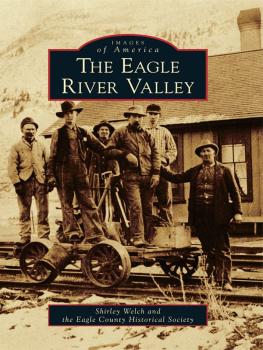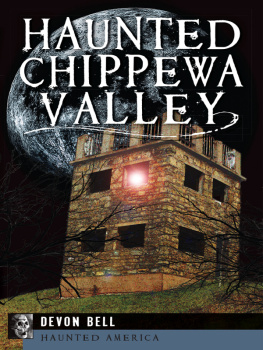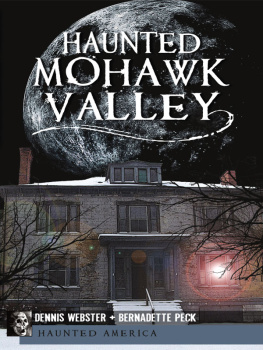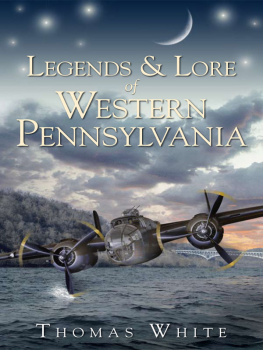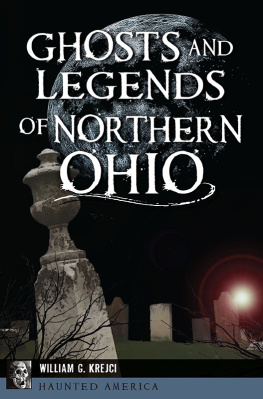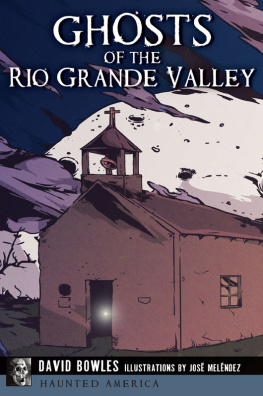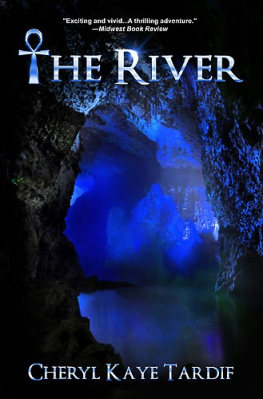LEGENDS OF THE NAHANNI VALLEY
BY HAMMERSON PETERS
MYSTERIES OF CANADA
2018 Mysteries of Canada
Publishers Website:
www.MysteriesOfCanada.com
2018 Hammerson Peters
Authors Website:
www.HammersonPeters.com
Acknowledgements
WHILE CONDUCTING RESEARCH for this book, I consulted professionals from a diversity of disciplines, from river guides, bush pilots, and First Nations chiefs to paleontologists, Mounties, and dog trainers. Representatives of each of these vocations provided me with some modicum of information, in one way or another, and I am grateful for every bit of help I received.
Of all the various experts from whom I sought assistance, three authorities in one particular field were especially accommodating. These excellent gentlemen, in the context of their contributions towards this book, can perhaps most accurately be described as Forteanologists- specialists in the study of Fortean, or unexplained phenomena. In response to my request for information on the various stories and legends surrounding the watershed of the South Nahanni River, these Fortean scholars- Dr. Michael D. Swords, Mr. Will Matthews, and especially Mr. Gary S. Mangiacopra- graciously provided me with reams of rare and invaluable material from their personal files, without which this book could not have been written. I cannot thank them enough for their tremendous generosity.
Special thanks is due to author Lyn Hancock, a sourdough in her own right, for access to restricted files in her personal archive; to Dene language translator Allan Adam, for his interpretive services; to Gina Payzant of the Athabasca Archives, for permission to display certain rare and historic photographs in this book; and to Anthony Roche, a native of the Canadian North, for sharing his own strange experiences in the subarctic wilderness.
I would be remiss if I did not thank the following archivists and librarians for their considerable research assistance: Bev Bayzat of McMaster University; Doug E. Cass of the Glenbow Museum; Chelsea Shriver and Weiyan Yan of the University of British Columbia Library; Susan and Teresa Neamtz of the Canadian Museum of Nature; Cindy Preece of Wilfred Laurier University; Robin Weber of the NWT Archives; and especially Molly Wittenberg, Moira Marsh, and Carrie Schwier of Indiana University Bloomington. Their help is greatly appreciated.
Introduction
The Nahanni River drains a vast land of fascinating beauty and splendor. The lure of gold has enticed many men through the canyons to this alluring land. Many have perished in its valley and mountains; some in search of gold. It is possible that most have died violent and unexplained deaths. Conjecture has given rise to all sorts of weird theories as to the cause of these misfortunes.
Dick Turner, Nahanni, 1989.
FOR MANY CANADIANS today, the word Nahanni is a foreign one. In some outdoor adventurers, it might evoke the South Nahanni River, a wild mountain waterway located in the southwest corner of the Northwest Territories; a subarctic Mecca for white water enthusiasts chock-full of world-class rapids, made famous by Raymond M. Pattersons 1954 adventure book Dangerous River . Others might know it as a breathtaking National Park and UNESCO World Heritage site through which the South Nahanni runs; a land of astounding geological and biological diversity, complete with dizzying canyons, enormous tufa mounds, and a waterfall nearly twice the height of the Niagara Falls. To a relative few, however, the Nahanni- this remote country hugging the junction of the British Columbia, Yukon, and Northwest Territories borders- is land of myth and mystery, home to legends commemorated in the names of its landmarks, such as Deadmen Valley, Headless Creek, Broken Skull Hot Springs, and the Funeral Range. This book will explore these legends surrounding the watershed of the South Nahanni River, a land popularly referred to as the Nahanni Valley.
In order to fully appreciate these legends, one must have a sense of the remoteness of the valley around which they revolve. Perhaps the best way to elicit that sense is to consider the general geography of the Canadian North, in the heart of which the Nahanni Valley resides.
For most Canadians, the North consists of Yukon, the Northwest Territories, and Nunavut, Canadas three federal territories. This vast region covers an area of nearly 3.9 million square kilometres (2.4 million square miles), most of it desolate wilderness. For all its size, the entire Canadian North houses a grand total of 120, 000 human residents, making it slightly less populous than the metropolitan of Lethbridge, Alberta. Thats 8,000 acres per person, with room to spare.
Broadly speaking, the three territories that comprise the Canadian North can be divided into four main physiographic regions.
Far to the north, beyond the tree line, sits the high Arctic, land of the midnight sun, the polar bear, and the Inuit. North of the arctic mainland- a stretch of permafrozen tundra skirting the Arctic Sea- is the Arctic Archipelago, a maze of huge rock-strewn islands and shifting sea ice through which explorers Martin Frobisher and John Franklin once sailed in search of the Northwest Passage.



South of the Arctic and to the east lie the Keewatin Barrens, a sprawling expanse of subarctic prairie and Precambrian rock stretching from eastern Northwest Territories to the Atlantic coast of Nunavut. Populated by enormous aggregations of caribou, mosquitoes, and black flies (and little else!), the Barren Lands are almost completely devoid of human presence.
Far to the west, tucked between the soaring Saint Elias Mountains of the Pacific Coast and the more easterly Selwyn Range, is the Yukon, home of the historic Klondike. Replete with snow-capped mountains, taiga-covered hills, emerald lakes, and the great Yukon River, this land of gold is as beautiful as it is unforgiving.
And in the midst of the Canadian North, along the western edge of the Northwest Territories, between Yukon and Keewatin and south of the Arctic, lies the Mackenzie country. This fourth and final Northern region- the region in which the aforementioned legends are set- comprises the watershed of the mighty Mackenzie River, an immense northward-flowing watercourse which owes its name to the Scottish explorer who first paddled its length in 1789. A rugged, mountainous territory carpeted with boreal forest and interspersed with muskeg-bottomed lowland, the Mackenzie drainage basin consists of two massive lakes and five major tributaries: the Liard, Keele, Arctic Red, Peel, and Great Bear Rivers.
If you travel west up the Liard River from its confluence with the Mackenzie, past the little village of Fort Simpson and over the Beaverdam Rapids, youll come to a lonely spruce-covered mountain called Nahanni Butte. At its foot, the Liard River is greeted by its main tributary, the South Nahanni River.
Up the South Nahanni and past the tiny Indian settlement of Nahanni Butte, located across the river from the mountain after which it was named, lies a section of river known as the Splits. This deadly labyrinth of gravelly islands and tangled log jams has claimed the lives of many a canoeist, both native and white, serving as an appropriate gateway to the sinister realm of mystery and menace beyond.
Next page

